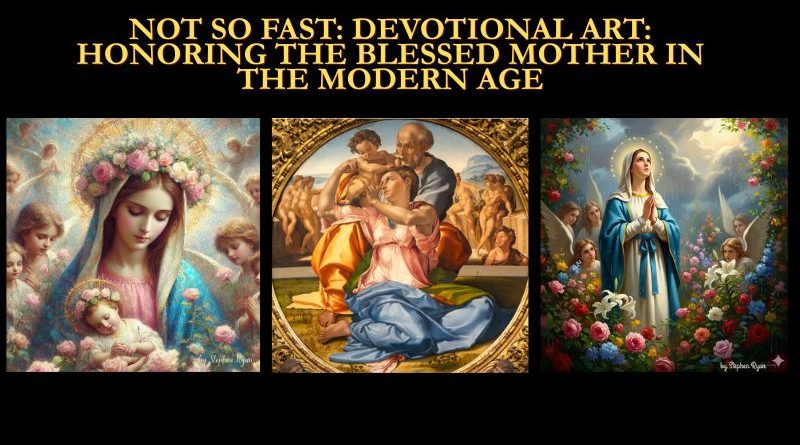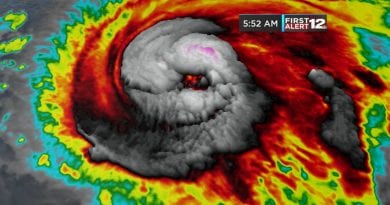The Spiritual Validity of AI-Generated Devotional Art: Honoring the Blessed Mother in the Modern Age
Honoring the Blessed Mother in the Modern Age
In an era where technology intersects with every aspect of human life, including faith and devotion, a new form of artistic expression has emerged: AI-generated art. For faithful Catholics deeply devoted to the Blessed Mother, creating images of the Virgin Mary through artificial intelligence is not a departure from tradition but a continuation of it. This article explores why such AI art, when produced by a sincere believer who echoes Pope John Paul II’s call to approach “To Christ through Mary,” holds the same devotional and spiritual integrity as the masterpieces commissioned from Renaissance artists. Just as patrons once prompted painters like Leonardo da Vinci or Raphael to depict Our Lady in specific ways, today’s devotees use AI prompts to craft images that inspire prayer and contemplation. Far from diminishing sanctity, AI art amplifies the virtues of devotion, making sacred imagery more accessible and vibrant in our contemporary world.
Historical Parallels: From Patron Prompts to AI Algorithms
To understand the legitimacy of AI devotional art, we must first revisit the Renaissance, a golden age of Catholic artistic expression. During this period, from the 14th to 17th centuries, the Church and wealthy patrons commissioned artists to create works that glorified God, the saints, and especially the Blessed Mother. These commissions were not born from pure artistic whim; they were guided by detailed “prompts” from patrons. For instance, a cardinal or noble might specify the Virgin Mary’s pose, attire, surrounding symbols (like lilies for purity or a crescent moon for her Immaculate Conception), and even the emotional tone to evoke Marian devotion.
Consider Raphael’s Sistine Madonna (1512), commissioned by Pope Julius II. The patron’s directives shaped the composition, ensuring it aligned with theological themes and inspired the faithful. Similarly, Leonardo da Vinci’s Virgin of the Rocks (1483–1486) was prompted by the Confraternity of the Immaculate Conception, who outlined elements to emphasize Mary’s role as intercessor. These artists were tools in the hands of the Church—skilled craftsmen translating devotional intent into visual form. The spiritual value of their work lay not in the paint or canvas but in the prayerful purpose behind it.
Fast-forward to today: A faithful Catholic, steeped in Marian devotion, uses AI tools like image generators to create art of the Blessed Mother. They input prompts such as “The Virgin Mary as Our Lady of Guadalupe, radiating maternal love, surrounded by roses and stars, in a style evoking Renaissance warmth.” This is strikingly analogous to a Renaissance patron’s commission. The AI acts as the “artist,” but the true creator is the devotee, whose heart and faith infuse the process. As Pope John Paul II proclaimed in his apostolic letter Rosarium Virginis Mariae (2002), “To Christ through Mary” is the path to deeper union with Jesus. When an AI image is born from this conviction—from a soul seeking to draw others closer to Christ via Mary’s intercession—it carries the same spiritual weight as a commissioned fresco.
The Devotional Core: Intent Over Medium
What makes art devotional is not the method of creation but the intent and fidelity to Church teaching. The Catechism of the Catholic Church (CCC 2132) affirms that sacred images are venerated not for themselves but for what they represent, aiding in prayer and contemplation. A Renaissance painting, no matter how masterfully executed, derives its holiness from its role in fostering devotion. The same applies to AI art crafted by a believer with “strong devotion to the Blessed Mother.”
Critics might argue that AI lacks the human “soul” of traditional art, but this overlooks the human element at the core: the prompter. Just as a patron’s faith guided the artist’s hand, the Catholic user’s devotion shapes the AI’s output. Iterating on prompts—refining details to better capture Mary’s tenderness or humility—mirrors the collaborative revisions between patrons and painters. Moreover, the Church has long embraced technological advancements in art, from the printing press disseminating devotional prints to photography capturing pilgrimages. AI is simply the latest tool, allowing the faithful to express “To Christ through Mary” in a digital vernacular.
In fact, Pope Francis has encouraged the use of technology in evangelization, stating in Evangelii Gaudium (2013) that “new technologies create deeper relationships” and can spread the Gospel. AI art aligns with this, enabling personalized depictions of the Blessed Mother that resonate with diverse cultures and individuals, much like how Renaissance art adapted to local devotions.
The Virtues of Devotional AI Art
Beyond equivalence, AI-generated devotional art offers distinct virtues that enhance its spiritual role in today’s Church:
- Accessibility and Democratization: Unlike Renaissance commissions, which required wealth and connections, AI tools are available to anyone with a computer or smartphone. A young Catholic in a remote village can create and share images of Our Lady, fostering personal devotion and community prayer. This inclusivity echoes Mary’s universal motherhood, making her image a bridge to Christ for all, regardless of artistic skill.
- Innovation in Expression: AI allows for endless variations, blending traditional iconography with modern elements. For example, depicting Mary in contemporary settings—such as amid urban poverty to highlight her compassion—can make ancient truths feel immediate. This keeps Marian devotion alive and relevant, drawing in younger generations who might otherwise view sacred art as archaic.
- Purity of Intent and Iteration: The process encourages reflection; users refine prompts through prayerful discernment, ensuring the final image honors Mary’s virtues. This iterative approach can deepen the creator’s own spirituality, turning art-making into a meditative act akin to praying the Rosary.
- Evangelistic Reach: Digital sharing amplifies impact. An AI image of the Blessed Mother can go viral on social media, inspiring millions to contemplate “To Christ through Mary.” This mirrors how Renaissance art in cathedrals evangelized the illiterate masses but scales it globally.
- Ethical and Theological Safeguards: When guided by faithful Catholics, AI art avoids distortions, adhering to doctrines like the Immaculate Conception or Assumption. It counters secular AI uses by reclaiming technology for sacred purposes, as urged by Vatican documents on digital ethics.
These virtues do not supplant traditional art but complement it, enriching the Church’s artistic heritage.
Conclusion: A Timeless Devotion in New Forms
In essence, AI art of the Blessed Mother, created by a devoted Catholic who lives by Pope John Paul II’s wisdom of approaching Christ through Mary, is every bit as devotional and spiritually correct as Renaissance masterpieces. Both are products of prompted creation, where human faith directs the medium to glorify God. Rather than fearing technology, the Church can embrace it as a gift, allowing more souls to encounter Mary’s heart. As we navigate the digital age, let us remember that true devotion transcends tools—it’s the love for Our Lady that sanctifies the image, leading us ever closer to her Son.





